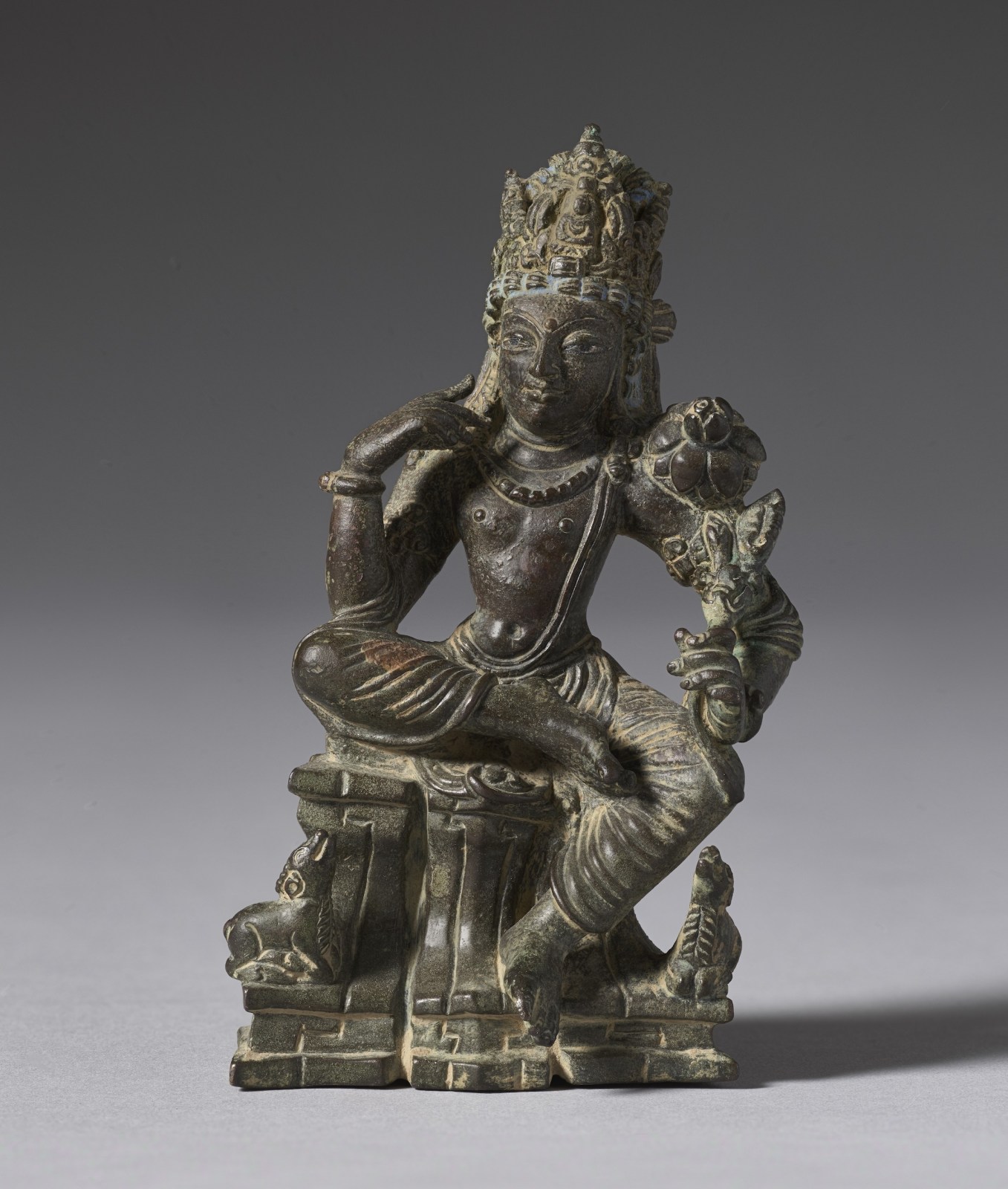
Provenance:
European Private Collection, acquired in 1998
The bronze shows Avalokiteshvara, the Great Bodhisattva of Compassion, seated on a stylized rocky outcrop with a pair of recumbent deer in attendance—a reference to the first sermon at the Deer Park at Sarnath. He leans to one side, raising his right hand towards his face in a representation known as “The Pensive Bodhisattva.” A large lotus flower is blooming at his shoulder with its stem held in his left hand. He wears a diaphanous pleated dhoti, ribbed meditation cord, beaded necklace, and a tripartite crown with an effigy of Avalokiteshvara's spiritual sire, Amitabha Buddha, seated in the front.
Located in the foothills of the Hindu Kush mountains in modern-day Pakistan, the Swat Valley became a haven for monastic communities fleeing from invading Huns and their persecution of Buddhism in ancient Gandhara during the 5th century. Buddhist bronzes from Swat therefore constitute an important artistic and religious link between the former Gandharan civilization, the Gupta period of Northern India, and the rising states of Kashmir, Gilgit, and Western Tibet. Although much of the Greco-Roman realism that informed Gandharan art is lost here, the confident posture, downcast expression, and pleated lower garment recall some of Gandharan art's key idioms, as well as those from the Gupta period of North India (4th-6th centuries).

